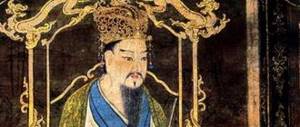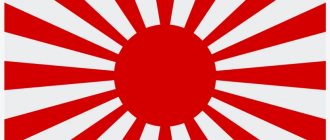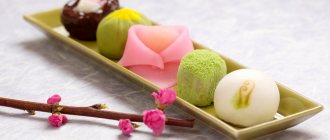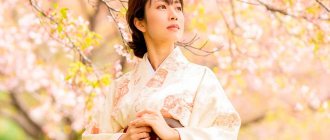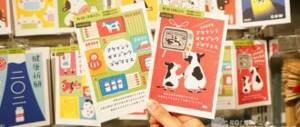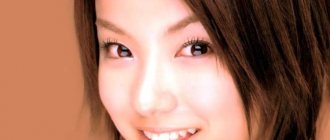There are a large variety of traditional Japanese dolls.
The art of making them has developed in Japan since ancient times, and reached its peak during the Edo period, which lasted until 1868. Kokeshi (or kokeshi) are traditional Japanese dolls made of wood.
. They have a simple cylindrical shape. Their painting usually includes various variations on the theme of floral patterns and flowers (chrysanthemums, etc.). And the traditional colors include red, black and yellow.
The appearance of one of the recognizable national symbols of Japan, kokeshi, dates back to the mid-to-late historical Edo period.
, when they were offered as souvenirs to all visitors to the healing hot springs in the northern region of the Land of the Rising Sun, Tohoku. Although their original purpose remains a subject of research. There are suggestions that the dolls had important spiritual significance and had healing powers (including being given to children as a talisman of health and growth).
Kokeshi dolls – tradition and modernity
Kokeshi dolls are produced in many hot spring towns in the Tohoku region, and they appeared in the second half of the Edo period (1603-1868), when artisans who produced wooden bowls and trays on horizontal lathes, reminiscent of a potter's wheel, began to make children's toys from scrap wood . Kokeshi were initially quite small to make it easier for children to hold them in their hands, but when kokeshi began to be sold as souvenirs to those coming for treatment at the hot springs, the dolls became quite popular, and in villages with thermal baths they began to produce dolls of various sizes and shapes, decorating them in local style.
Large dolls decorate the street in Naruko-onsen, one of the centers of kokeshi production.
A master making kokeshi in the Sakurai Kokeshi workshop. Here visitors can try to paint their own doll
The first Japanese magazine dedicated to kokeshi, published in the early years of Showa (1926-1989), advertised the dolls as traditional crafts and works of art, and they were very popular at the time. The next kokeshi boom followed during the booming economic years of the late 1960s, when people flocked to Tohoku hot springs and brought back kokeshi as souvenirs.
Currently, kokeshi are experiencing another wave of popularity, mainly thanks to young women - the so-called kokeshi joshi, "kokeshi girls", are actively searching for traditional dolls, as well as collecting items from new creative art forms. The most popular new varieties include kokeshi with a three-dimensional o-kappa hairstyle; Kokeshi in the form of animals or anime characters are also common.
Kokeshi Miyagi Zao Museum in Togatta Onsen. Similar establishments displaying kokeshi can be found throughout the Tohoku region.
The kokeshi theme is found on all kinds of souvenirs
The most striking recent version is the kokeshi plane, created in 2015. Described as "strange but funny", he has been officially recognized as the kokeshi of the Miyagi Prefectural Department of Tourism and has appeared several times on posters promoting local airlines.
Thanks to the influx of visitors from abroad, kokeshi have gained popularity outside Japan, especially in Europe, where more and more people are collecting them, appreciating the simplicity of the lines and the characteristic Japanese motifs.
Kokeshi plane at the Miyagi Prefectural Administration Building
Characteristic styles of regions
At the end of the Edo period, Tohoku thermal waters were popular among farmers who came here during the off-season to recuperate. Kokeshi-producing artisans felt the demand for their products from visitors and began painting dolls that had previously been made from unpainted wood. The color red was used most often, which, according to beliefs, had the ability to ward off evil and protect against smallpox and other diseases common at that time. Well-rested in the healing waters of the onsen, farmers took these traditional kokeshi home to their villages as amulets and good luck talismans to ensure a bountiful harvest. Kokeshi were given to children as toys in the hope that they would help children grow up strong and healthy.
There are various theories about the origin of the word kokeshi, which was also called kogesu, kiboko or deko in various places. At a meeting of craftsmen and collectors in 1940, participants agreed to standardize the name in the form of kokeshi, and these dolls have been called that only ever since.
The front of the kokeshi from Naruko-onsen features chrysanthemums, and the head is crowned with a diamond-shaped chrysanthemum symbol (Photo courtesy of the Miyagi Prefectural Tourism Department)
Kokeshi is produced throughout Tohoku, but the three main production centers are Naruko and Togatta in Miyagi Prefecture and Tsuchiyu in Fukushima Prefecture. There are 10-12 varieties of kokeshi, each of which has distinctive features - a special shape, decoration or production technique, which are inherited in each region.
Tsugaru Style (Aomori)
Tsugaru-style kokeshi is produced mainly in Nuruyu-onsen and Owani-onsen in the Tsugaru area of Aomori Prefecture. The head and body of these dolls are carved from a single piece of wood. They often depict a short hairstyle, a narrow waist, from which the doll widens downward, as if wearing a skirt. The design often depicts Daruma (Bodhidharma), or peonies, the flower of the family coat of arms of the rulers of the Tsugaru domain.
Nambu (Iwate) style
Kokeshi Iwate have a movable head that makes a knocking noise when the doll is moved. Initially, they kept the smooth wood surface to emphasize the texture of the wood, but later began to paint under the influence of the Naruko and Togatta styles. Produced mainly in the cities of Hanamaki and Morioka in Iwate Prefecture.
Kijiyama style (Akita)
Made from a single piece of wood, the Kijiyama kokeshi has a small and somewhat elongated head with a short haircut, often adorned with a red ribbon. A distinctive feature of the Kijiyama style kavatsura variety is the striped kimono pattern on the doll's body, although some are decorated with chrysanthemum or plum flowers.
From left to right: Tsugaru, Nambu and Kijiyama-style kokeshi (photos courtesy of the Tsugaru Kokeshi Doll Museum, Hanamaki Tourism Association and Yuzawa City Chamber of Commerce and Industry Department)
Naruko Style (Miyagi)
These kokeshi have a head attached to the body with a pin and make a creaking sound when turned. The slightly concave body is decorated with vibrant chrysanthemum or momiji maple patterns that highlight the doll's sweet expression.
Sakunami Style (Miyagi)
This elegant variety of kokeshi recalls the product's original function as an easy-to-handle children's toy. The body is mounted on a round stand; in the middle it is often decorated with images of chrysanthemums with long thin petals. The only remaining manufacturer of this style in modern Sakunami is the Hiraga Kokeshi workshop.
Togatta Style (Miyagi)
Kokeshi Togatta has a head noticeably wider than the body, and the upper part of the head is crowned with a red diverging pattern. These memorable figurines are decorated with lively ornaments with motifs of chrysanthemums, plums or cherries. Sickle- or almond-shaped eyes give the face the expression of a kind smile.
From left to right: kokeshi in the Naruko, Sakunami and Togatta styles (right and left photos courtesy of the Miyagi Prefectural Department of Tourism; center photo courtesy of the Sendai Tourism, Convention and International Relations Association)
Yajiro (Miyagi) Style
The kokeshi in this style has a head slightly wider than the body, and the incisor marks give the upper part of the head a resemblance to a beret. The body is slightly concave in the center; a distinctive feature is the lines depicting the neckline and lower edge of a bright kimono.
Hijiori style (Yamagata)
Kokeshi Hijiori resemble dolls in the style of Naruko and Togatta, but have their own characteristic colors, and their crescent-shaped eyes give a benevolent expression. The yellow body with angular shoulders is usually decorated with chrysanthemum patterns. Some larger dolls of this type have heads filled with adzuki beans, which make a rattling sound.
Yamagata style (Yamagata)
This style of kokeshi, created by craftsmen trained in Sakunami, is unusual in that the dolls are made in the heart of Yamagata city, and not in the thermal water village. The dolls, with a small head and thin body, are decorated with motifs of plum, cherry or chrysanthemum, and sometimes safflower, the official flower of Yamagata Prefecture.
From left to right - kokeshi in the Yajiro, Hijiori and Yamagata styles (photos courtesy of Shiroishi Tourism Organization, Hoteya and the Yamagata City Department of Commerce and Tourism)
Zao Takayu style (Yamagata)
Influenced by the Togatta style, these kokeshi are produced in the cities of Yamagata, Yonezawa and Tendo in Yamagata Prefecture, as well as in their homeland, Zao-onsen hot springs. The massive body widens slightly at the bottom and is decorated with an ornament of intertwined chrysanthemums, cherry blossoms or peonies. The tegar's head ornament consists of red lines diverging from the center.
Tsuchiyu style (Fukushima)
These kokeshi have a small head and a thin body. The top of the head is lathe-cut with a design of concentric circles, and the forehead has a red kase design above the bangs. Kokeshi Tsuchiya, with their elongated noses and small red mouths, makes a charming impression. A striking pattern of straight lines encircles the torso, while wavy lines added for variety are a hallmark of this style.
Nakanosawa style (Fukushima)
These kokeshi are produced in Nakanosawa Onsen, at the foot of Mount Bandai. They attract attention with huge red eyes and a wide nose, the body is decorated with peonies or sakura flowers. Despite the name Tako-bozu, where bozu is used to mean "boy", this doll primarily depicts a woman. However, there are also male Ao-bozu (“Blue Boy”) dolls, which is unusual for kokeshi.
From left to right: Zao-style kokeshi, Tsuchiyu and Nakanosawa (courtesy of the Yamagata City Department of Commerce and Tourism, Tsuchiyu Onsen Tourism Association and Shoepress)
Shoepress report, text and photos
Banner photo: Kokeshi dolls in the prefect style. Yamagata at the Nishida Memorial Museum in Fukushima City. Photo courtesy of Fukushima Prefectural Tourism Development and Rehabilitation Committee
What it is?
Since ancient times, there have been many traditional dolls in Japan; the secrets of their creation were passed on from the master to his students. The most popular are kokeshi. In ancient times they were given great importance; they acted as a talisman, protection from misfortunes and diseases.
Kokeshi (kokeshi) are small cylindrical figurines made from solid cherry, birch, and maple wood. Typically the body and head are cut out separately on a lathe and then joined together. The Japanese doll has no limbs. They are painted with leaves, inflorescences and other ornaments. Traditional shades are red, yellow, black. Facial features are applied with several strokes.
Each locality had its own secrets for turning and painting wooden dolls. Centers for folk crafts still exist in Kyoto, Nara, and Kagoshima. Modern Japanese souvenirs are created not only from wood, they are made from stone, plastic, cardboard, clay, fabric and thread. The height can be from a few centimeters to a meter. They are painted with a variety of colors and patterns.
In modern times, it is rather an interior decoration. For example, the Kimmidoll brand has released a whole series of kokeshi dolls, each of which has become the personification of one of the true values in a person’s life.
Souvenirs not only remind of important events in life, but are also a symbol and reminder of invaluable personality traits, such as friendliness, kindness and beauty, courage, loyalty, etc.

